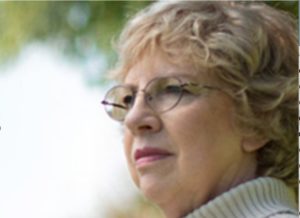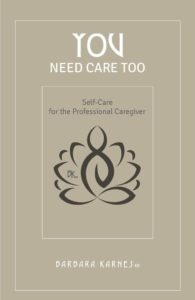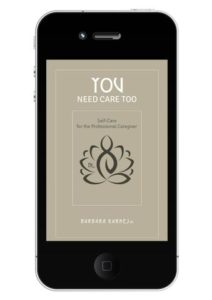In this second part of a two part interview, I sit down with award winning author, nurse, and end-of-life educator, Barbara Karnes, to talk about her experiences with hospice and end-of-life care. Among many other end-of-life works, Barbara wrote the famous”Gone From my Sight” (aka the “blue book”) which was the first hospice industry resource for patients and family about the dying process.
Editor’s Note: This interview has been edited for length and readability.
 Colleen Ferguson: You’ve almost been involved with hospice and end-of-life care since the beginning; could you share a little about the history of hospice and your experience with it?
Colleen Ferguson: You’ve almost been involved with hospice and end-of-life care since the beginning; could you share a little about the history of hospice and your experience with it?
Barbara Karnes: Well, the concept of hospice originated in England with Cicely Saunders, who was a nurse and social worker. England has the National Health Service, and at the time, their care was divided up into individual buildings — separate hospitals for different needs. And they created a building for people who couldn’t be “fixed” and called it hospice.
So these ideas were coming over to America, but it didn’t quite fit into our healthcare system. And at this time, Elisabeth Kubler-Ross, a psychiatrist and pioneer in near-death studies, came forward and said that the medical profession wasn’t really taking care of people that were dying…that we were lacking in end-of-life care.
This is about the time I got involved. I was hearing this and thought, “Wow, this is what I thought nursing should be about.” I thought it was about taking care of more than just the physical aspect, but taking care of the emotional, mental and spiritual parts of a person as well as their family. Hospice seemed to incorporate all of this, so I pursued it and took the Hospice Concepts class.
In the beginning, the goal of hospice was about being with the family during death. It was developing outside the medical model, because dying isn’t a medical event. It’s a social, communal event.
But as hospice and palliative care has evolved over the years, the regulations have developed such that many families are alone with their loved one when he or she dies, and they don’t know what to do.
Colleen: Do you think more people are dying at home?
Barbara: No, I don’t think so. At least, it’s not happening as much as I’d like to see it. If you ask most people where they want to die, they’ll say, “At home on the bed with my cat.” That’s what most people want.
But our healthcare is not geared to meet people’s needs at end of life. For a person to die at home, it’s 24/7 hard work, and many people can’t maintain or afford to have at-home care. It’s not about how much medical knowledge is needed for end-of-life care, it’s the support and guidance for the family to take care of this person as he or she is dying.
So most people are still dying in the ICU under the medical model, which is the idea that “we fix people.” If medical can’t fix people, then according to their perspective, they’ve failed. Death is to be avoided and not prepared for.
But there are hospice houses where people can go to die, which is better than a hospital, ICU, or nursing home. And while some hospice and end-of-life care is taking on more of the medical model, the community is answering and developing its own systems, outside the medical model. There are end-of-life doulas who can help families through the death process, ministries that are learning about end of life, and residential facilities that are only taking in people who are approaching end of life.
Colleen: For those who work or want to work in hospice or other end-of-life care, can you give me a brief outline about your book, “You Need Care Too: Self Care for the Professional Caregiver?”

Credit: bkbooks.com
Barbara: First, you have to know why you want to do it. What motivates you? That’s the key. Then you’ll want to explore your beliefs, because unconsciously, all of that is going to interact with your personality, and that’s your foundation. So, what do you think happens? If you think death is “bad” or a failure, then you’re probably in the wrong job.
Once you know who you are and why you’re doing this, then I recommend a buddy system. It’s important that you have someone in your work environment who understands. You need to be able decompress and get it out. Caregivers carry a lot of unrealized grief, because we give away a piece of ourselves with each patient. We need to develop a means of closure.
We can’t grieve extensively for every patient and family. There were people who I took care of that got into my heart, and I grieved deeply for them. And I knew they would come along.
If you missed Part One of our interview with Barbara Karnes catch up here.

 How Has End-of-Life Care Changed?
How Has End-of-Life Care Changed?



 How Dare You Die Now!
How Dare You Die Now!
 Debating Medical Aid in Dying
Debating Medical Aid in Dying
 “Help Me, Helen”
“Help Me, Helen”














